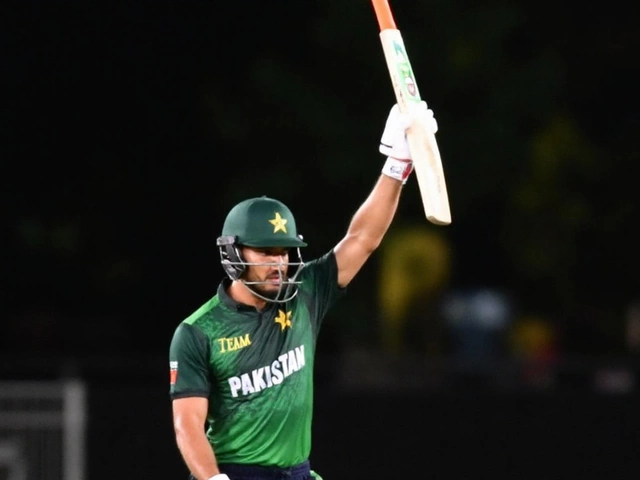The wickets that tilt India–Pakistan T20Is
In a rivalry where games often swing on one over, the bowlers who break partnerships usually decide everything. For Pakistan in T20Is against India, a familiar name still sits on top: Umar Gul. He has 11 wickets from just six bowling innings—an elite return in a small, high-pressure sample.
These figures, compiled through mid-2024, map how different eras and roles—new-ball swing, middle-overs control, and death-overs yorkers—have shaped Pakistan’s success in the shortest format. And they underline a simple truth: when the ball moves or grips, Pakistan’s attack bites.
Here’s the leaderboard of Pakistani bowlers with the most T20I wickets against India (innings in brackets):
- Umar Gul — 11 wickets (6)
- Mohammad Nawaz — 6 wickets (3)
- Mohammad Asif — 5 wickets (2)
- Haris Rauf — 4 wickets (4)
- Mohammad Amir — 4 wickets (2)
- Naseem Shah — 4 wickets (3)
- Shahid Afridi — 4 wickets (7)
The spread tells its own story: seamers dominate the list, but a left-arm spinner sits second—proof that India’s right-hand heavy top order can be nudged off rhythm by angle and control.
Gul’s case is the clearest. At his peak, he was a T20 specialist before the term became fashionable—hard length, late tailing yorkers, and ice-cold death overs. Against India, he combined reliability with bite, often bowling the toughest overs. Eleven wickets in six innings is both volume and efficiency, built across multiple tournaments and conditions.
Mohammad Nawaz at No. 2 speaks to modern T20 thinking. Used smartly in the powerplay and the middle overs, he attacks the stumps, keeps a tight field in front of square, and forces batters to take on the big hit straight. Six wickets in just three innings is a small sample, but the strike rate is elite. He also doubles up as a floating hitter, which gives captains tactical flexibility when games get tight.
Mohammad Asif sits third despite playing only two matches. That includes a standout spell with the new ball that still gets replayed whenever fans talk about Indo-Pak T20s—sharp seam, fuller length, top-of-off stuff that made batters grope. His career was short, but in this rivalry, he left a clear mark.
The quartet on four wickets—Haris Rauf, Mohammad Amir, Naseem Shah, and Shahid Afridi—brings variety and phases. Rauf is Pakistan’s pace-through-the-middle option, heavy ball at 145 kph, and a death-overs specialist who thrives on hard lengths. He’s been in the eye of the storm in marquee games, including that Melbourne classic in 2022, when his pace challenged India’s lineup even as Virat Kohli stole the show late.
Amir’s numbers are built on pure new-ball menace. His spell in Mirpur in 2016 was the template: swing at high speed, attacking the stumps, and making India’s top order play. Four wickets in just two innings reflect exactly what he was picked for—impact over volume.
Naseem Shah is a newer entry, but the method is traditional: movement with discipline. He hits that corridor, shapes it late, and makes batters think twice about the drive. In recent India clashes, he has been used both up front and at the death—rare trust for a young quick.
Shahid Afridi rounding out this group is a reminder of how different T20 was in its early years. He bowled with pace off the surface and more skid than big turn. Four wickets across seven innings is modest, but his value was in control and pressure. In low-scoring games, that matters as much as wickets.

Patterns behind the numbers
Indo-Pak T20Is don’t happen often, so the data set is thin. A single burst can move a bowler several places up the list. That’s why context matters—the venues (South Africa in 2007, Sri Lanka in 2012, Bangladesh in 2016, the UAE and Sri Lanka in 2021–22, Australia in late 2022), the ball (new vs. old), and the match state.
When Pakistan have driven games, it’s usually been with two bowling moments: early swing that dents India’s top order, or late pace that dries up boundaries. Gul and Amir owned the death and the powerplay, respectively. Rauf and Naseem have extended that template in recent years. Nawaz, with his left-arm angle, often gets the call when a right-hander settles in.
There’s also the tactical cat-and-mouse. India’s lineup is packed with right-handers, which is why Pakistan often pairs a left-arm option (Amir or a spinner like Nawaz) with a skiddy right-arm quick. Match-ups shape fields, lengths, and even over-by-over plans. In these games, captains rarely stick to pre-set bowling patterns for long.
One more layer: pressure overs. Against India, Pakistan’s bowlers face two squeeze points—the sixth over of the powerplay and the 16th–20th block. The best returns have come when captains save a gun over for each window. Gul’s legacy sits right there. So do Rauf’s newer spells.
For balance, India’s quicks have replied in kind in this rivalry. Think Bhuvneshwar Kumar’s four-wicket burst in the 2022 Asia Cup group game, or Hardik Pandya’s hard lengths at the death in the same tournament. Those nights underline the point: in India–Pakistan T20Is, the ball isn’t a passenger. It drives results.
Methodology note: figures here track official T20I wickets by Pakistan bowlers against India, with innings referring to bowling innings in those head-to-head games. Totals are compiled through the first half of 2024. Given how few T20Is these teams play against each other, the table can shift fast as new matches are added.
Who could break into the list next? Shaheen Shah Afridi, who already owns a defining new-ball spell against India in T20 World Cup play, sits just behind this group and has the skill set to climb quickly. In a rivalry where one good night can rewrite the charts, the next meeting could shuffle this order again.



